Seoul is a busy city with tall buildings and modern life, but it also has a peaceful side. There are many famous temples in Seoul where people can relax, learn about history, and see beautiful old buildings. These temples have lovely Korean designs and a quiet feeling. Visitors can enjoy nature, learn about Buddhism, or just sit in peace. Some temples also offer meditation and cultural programs. Many of these places are open for free so that anyone can visit. If you want to see a calm and special part of Seoul, these temples are a great place to go.
Top 10 Temples In Seoul
Here is a list of the best temples in Seoul that will make your trip memorable enhancing with a spiritual experience.
1. Jogyesa Temple
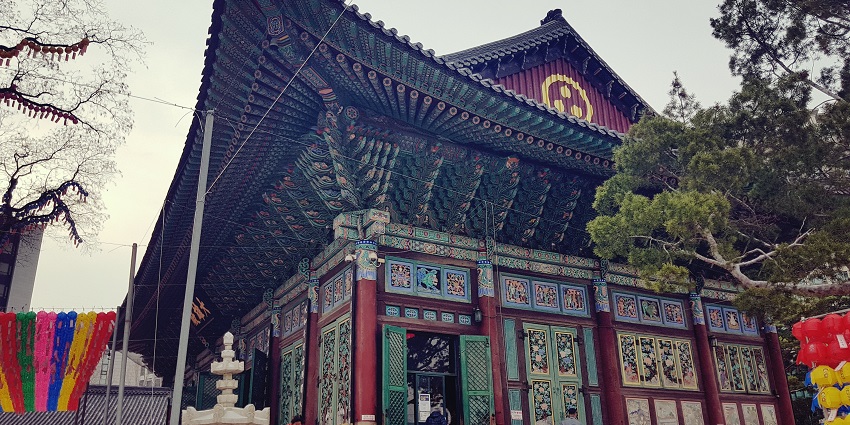
Photo: Irma2403 / Wikimedia Commons
Jogyesa Temple, established in 1910, serves as the main temple of the Jogye Order of Korean Buddhism. It is a famous Korean temple and symbolises the perseverance and revival of Buddhism in Korea. It is renowned for its vibrant atmosphere, especially during the annual lantern festival celebrating Buddha’s birthday, when thousands of colourful lanterns illuminate the grounds. Visitors can also admire the ancient trees within the temple complex, including a white pine tree over 500 years old. Jogyesa’s accessible urban location is popular with locals and tourists looking for a quiet break from the bustling city.
Location: 55 Ujeongguk-ro, Jongno District, Seoul, South Korea
Timings: 24*7
Entry Fees: N/A
2. Bongeunsa Temple
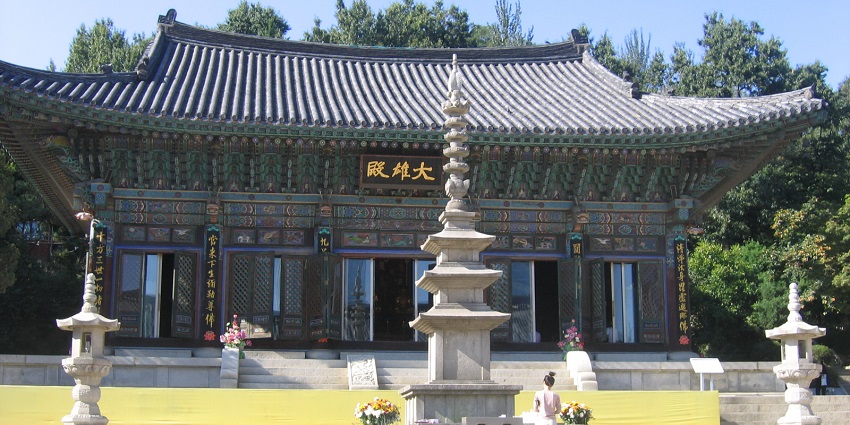
Photo: Rheo1905 / Wikimedia Commons
Bongeunsa Temple, founded in 794 during the Silla Dynasty, is a significant centre of Seon (Zen) Buddhism. The temple is famed for its impressive 23-metre-high statue of Maitreya Buddha, which overlooks the complex. Bongeunsa provides various cultural programmes, including temple stay experiences, allowing visitors to immerse themselves in traditional Buddhist practices such as meditation and tea ceremonies. The temple’s annual Lotus Lantern Festival is a highlight, featuring beautifully crafted lanterns and traditional performances. With its rich history and immersive experiences, it remains one of the most famous temples to visit in Seoul.
Location: 531 Bongeunsa-ro, Gangnam District, Seoul, South Korea
Timings: 5 AM – 9 PM
Entry Fees: N/A
3. Gilsangsa Temple

Photo: S h y numis / Wikimedia Commons
Gilsangsa Temple is one of the popular temples in Seoul. It is on the slopes of Mt. Samgak and has beautiful nature around it. Long ago, it was a fancy restaurant, but later, it was given away and turned into a temple. People visit to enjoy the peaceful place, join meditation sessions, and listen to Buddhist talks. The temple is full of trees and flowers, making it a nice spot to relax. It looks very pretty in spring when flowers bloom and in autumn when leaves turn colourful. Many people come here to find peace and enjoy nature.
Location: 68 Seonjam-ro 5-gil, Seongbuk District, Seoul
Timings: 4 AM – 10 PM
Entry Fees: N/A
4. Hwagyesa Temple
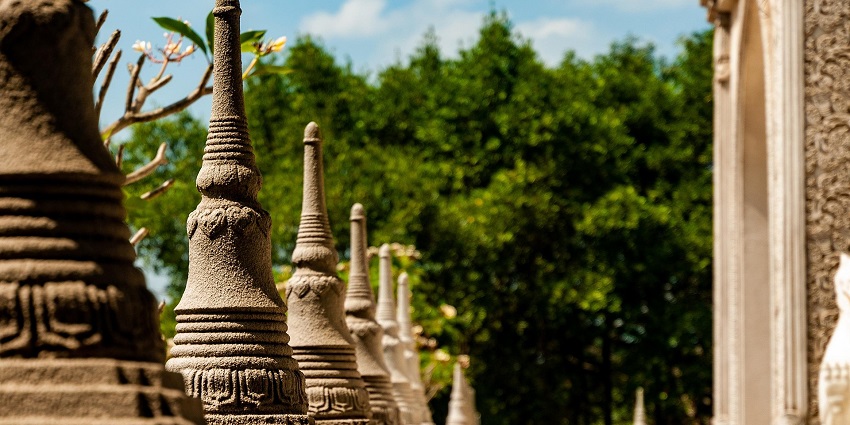
Photo: phong38theKOP / Pixabay / Image For Representation Only
Hwagyesa Temple is in the north part of the city. Many people visit this temple to learn about Buddhist life. The temple has a special program where visitors can stay for a day and take part in Buddhist activities. It is inside Bukhansan National Park, which has many trees and mountains. The fresh air and quiet place make it good for meditation and rest. The beautiful view of the mountains makes the temple even more peaceful. It is a great place for people who love nature and want a calm experience.
Location: 117 Hwagyesa-gil, Gangbuk District, Seoul
Timings: 4 AM – 9 PM
Entry Fees: N/A
5. Myogaksa Temple
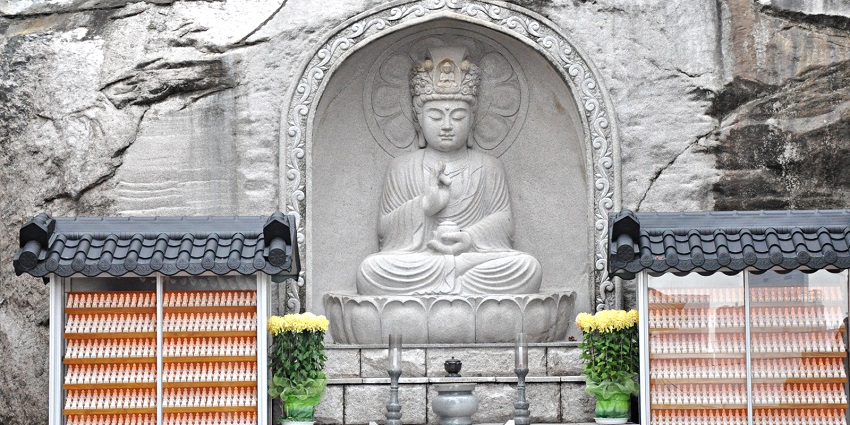
Photo: culturalcorpsofkoreanbuddhism / Wikimedia Commons
Myogaksa Temple is a peaceful place on Naksan Mountain in Seoul where people can relax and enjoy the quiet. Visitors can join meditation and tea ceremonies to feel calm. The temple has a beautiful view of the city, making it a great place to visit. The monks are very kind and welcome everyone. They also share simple Buddhist teachings with visitors. This temple is a good place to learn, pray, or just enjoy the peaceful surroundings. Many people come here to find peace and take a break from busy city life.
Location: 31 Jong-ro 63-Gil, Jongno District, Seoul
Timings: 5 AM – 9 PM
Entry Fees: N/A
6. Yeonjuam Temple
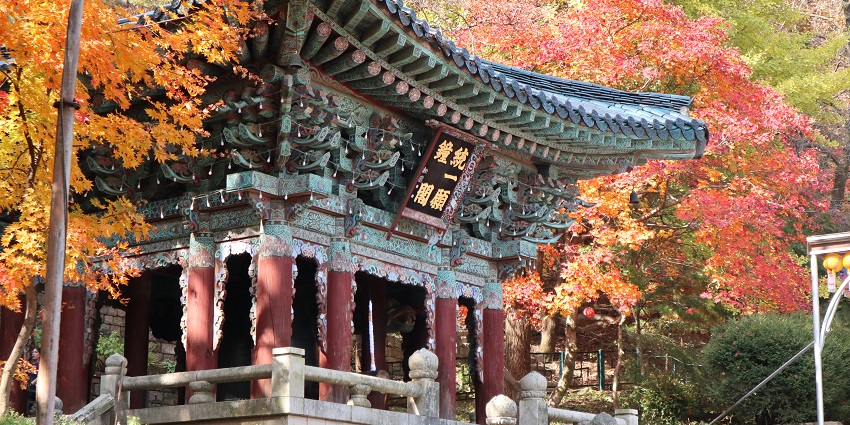
Photo: S h y numis / Wikimedia Commons
Yeonjuam Temple is a quiet and beautiful place on Gwanaksan Mountain in Seoul. It is a holy temple in Seoul and a great spot for people who love nature and hiking. The temple is on a hill so that visitors can see amazing views of the city. It is a peaceful place where people can sit, think, and feel calm. Many people come here to enjoy the fresh air and relax away from the busy city. The temple is not crowded, making it perfect for quiet moments. It is a special place to visit for both nature and peace lovers.
Location: 21-2 Gwansan-dong, Gwanak District, Seoul
Timings: 5 AM – 7 PM
Entry Fees: N/A
7. Doseonsa Temple
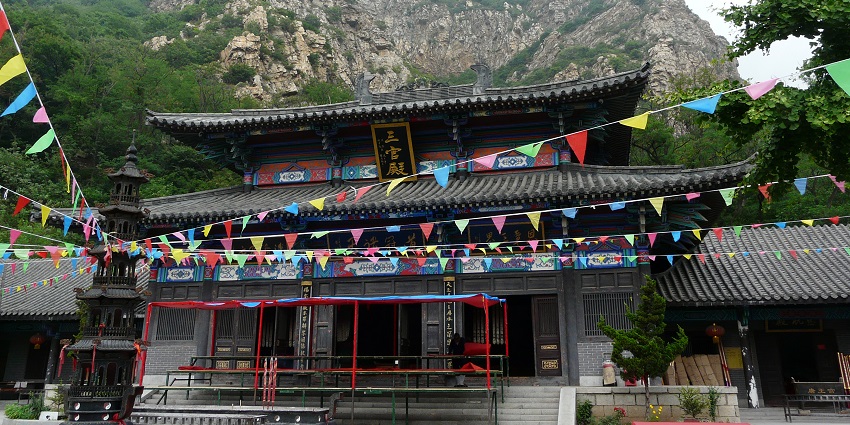
Photo: Ffggss / Wikimedia Commons
Doseonsa Temple is in Bukhansan National Park and was built a very long time ago, in the 7th century. The temple is surrounded by trees and is a quiet place away from the busy city. People can see old pagodas, stone lanterns, and beautiful Korean-style buildings. The temple looks very pretty in autumn when the leaves turn red and yellow. Many people visit to enjoy the peaceful feeling and the lovely views. It is a great place to relax, learn about history, and see traditional Korean culture.
Location: 86-6 Samyang-ro 173-gil, Gangbuk District, Seoul
Timings: 4 AM – 8 PM
Entry Fees: N/A
8. Seunggasa Temple
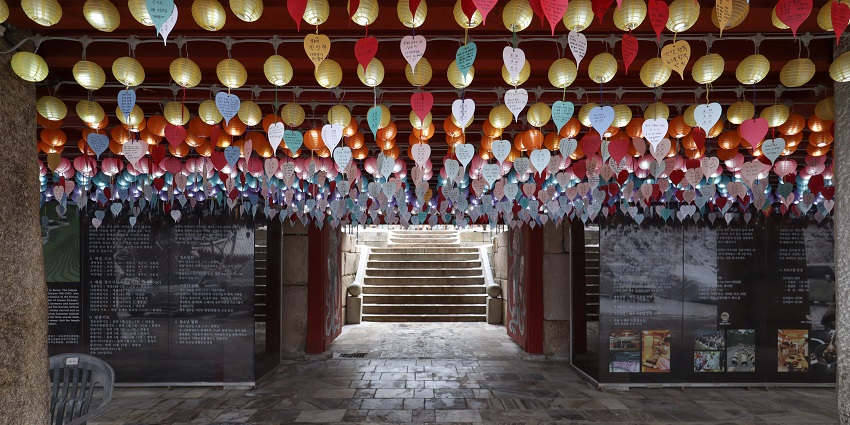
Photo: Mobius6 / Wikimedia Commons / Image For Representation Only
Seunggasa Temple is on Inwangsan Mountain and has beautiful views of the city. The temple is very quiet and peaceful, making it a good place to relax. People come here to pray, learn about Buddhism, and do meditation. There are also nice hiking trails around the temple. Visitors can join prayer ceremonies or just walk around and enjoy the beauty of the temple. It is a great place to take a break from the busy city and feel calm. Many people visit to enjoy the peaceful atmosphere and nature.
Location: 68 Bugaksan-ro, Jongno District, Seoul
Timings: 4:30 AM – 9 PM
Entry Fees: N/A
9. Jingwansa Temple
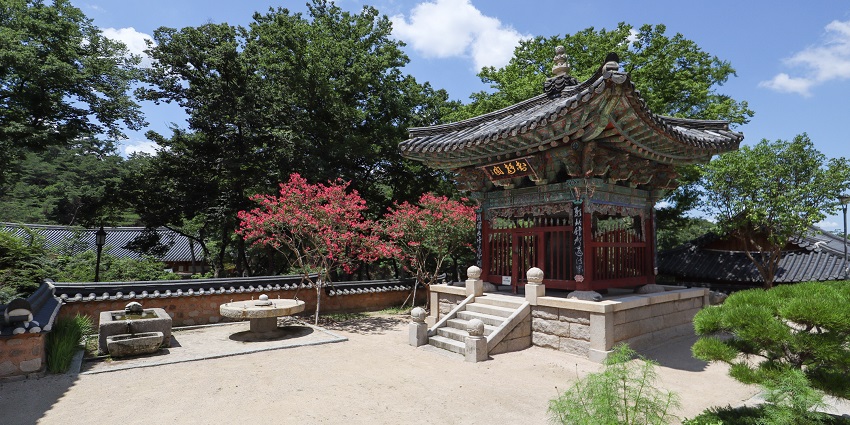
Photo: Mobius6 / Wikimedia Commons
Jingwansa Temple is near Bukhansan National Park, which is surrounded by nature. The temple is peaceful and a good place to relax. Many people visit to learn about Buddhism and stay overnight in the temple stay program. Visitors can also try simple vegetarian Buddhist meals. Jingwansa is one of the four main Buddhist temples in Seoul. It is a great place to see Korean culture and history. The temple is quiet and beautiful, making it a special place for those who want to learn and experience temple life.
Location: 73 Jingwan-gil, Eunpyeong District, Seoul
Timings: 4 AM – 10 PM
Entry Fees: N/A
10. Baengnyeonsa Temple
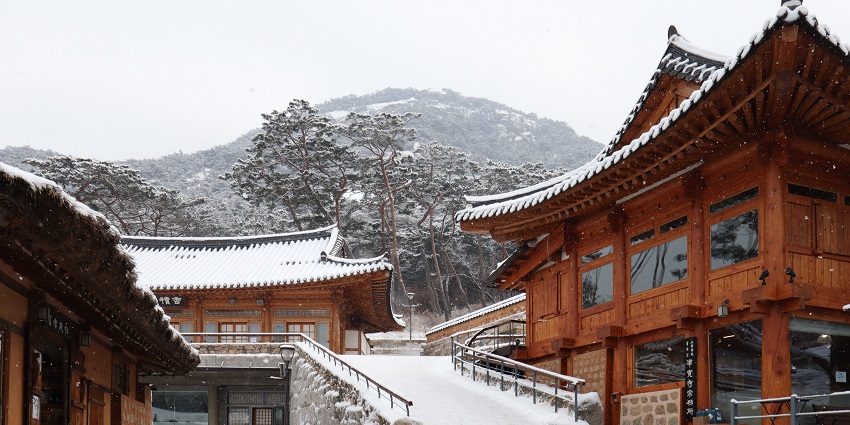
Photo: Mobius6 / Wikimedia Commons / Image For Representation Only
Baengnyeonsa Temple is a quiet and peaceful place in Seoul. The temple is near Hongjecheon Stream and is a nice place to relax away from the busy city. It has a beautiful main hall and a big Buddha statue. People come here to meditate and learn about Korean Buddhism. In spring, the temple looks very pretty, with cherry blossoms all around. It is a good place to visit if you want to enjoy nature and feel calm.
Location: 110-42 Hongji-dong, Jongno District, Seoul
Timings: 5 AM – 9 PM
Entry Fees: N/A
These popular temples in Seoul are a great way to see the city’s spiritual and cultural side. You can meditate, learn about history, or enjoy the peaceful surroundings. Each temple has something special to offer. The best part is that visiting them does not cost anything. Plan a trip with TripXL to explore these beautiful temples and experience the calm and beauty they offer.
Cover Photo: Mobius6 / Wikimedia Commons


 WhatsApp
WhatsApp
 Twitter
Twitter









